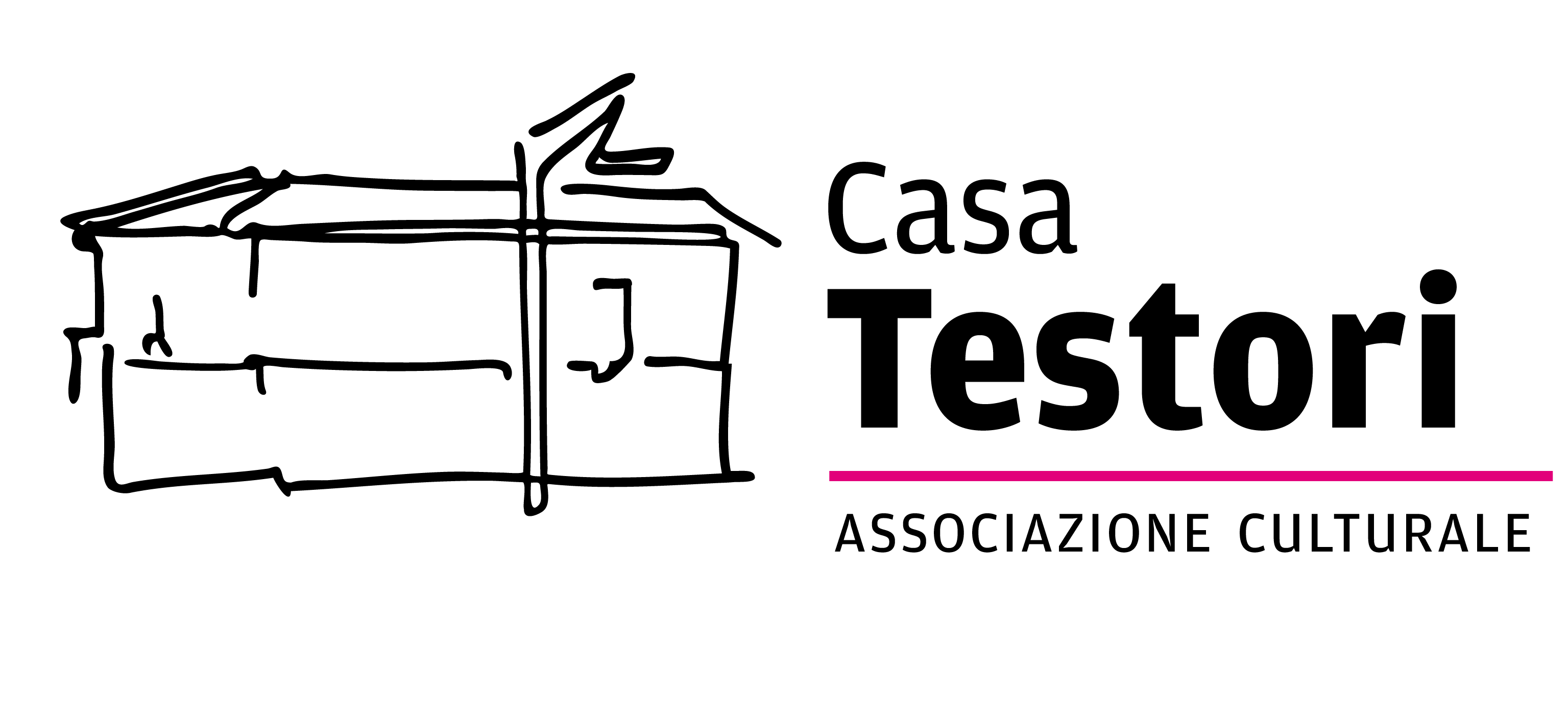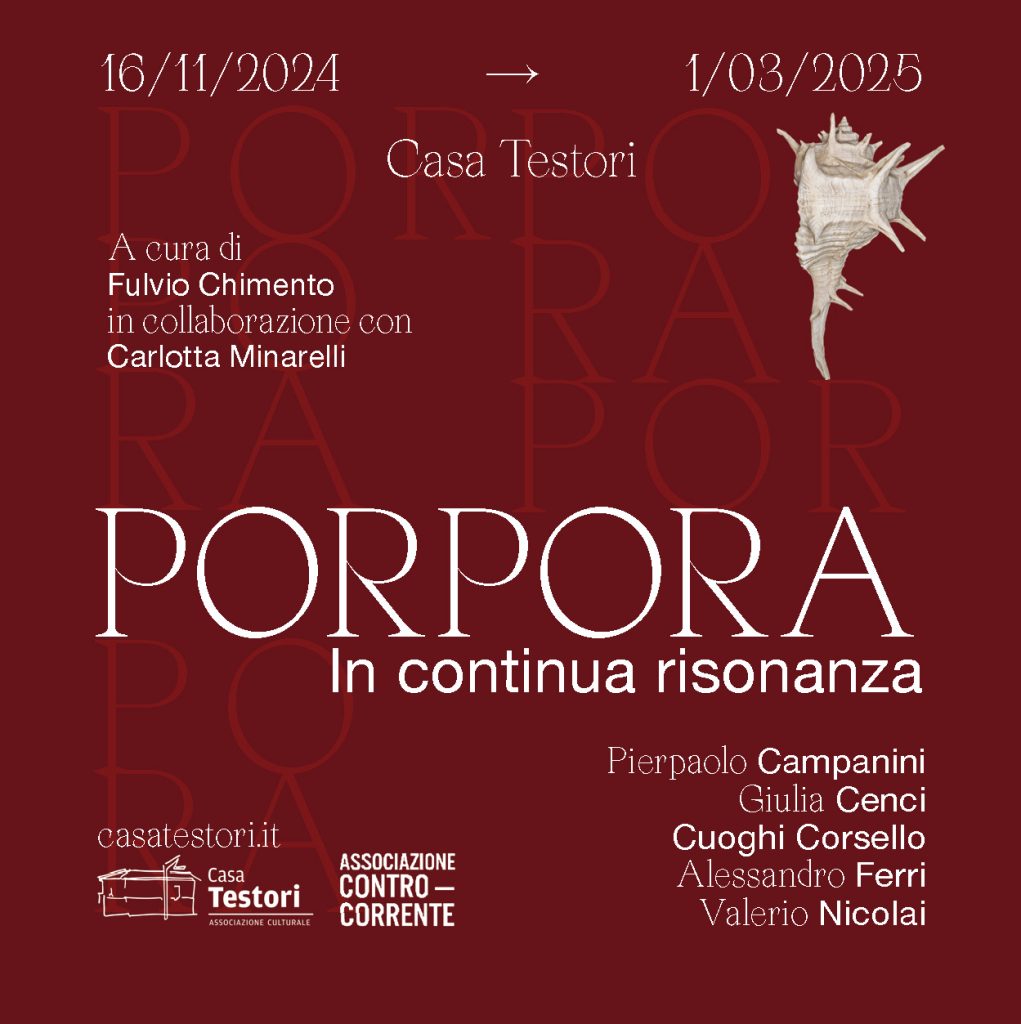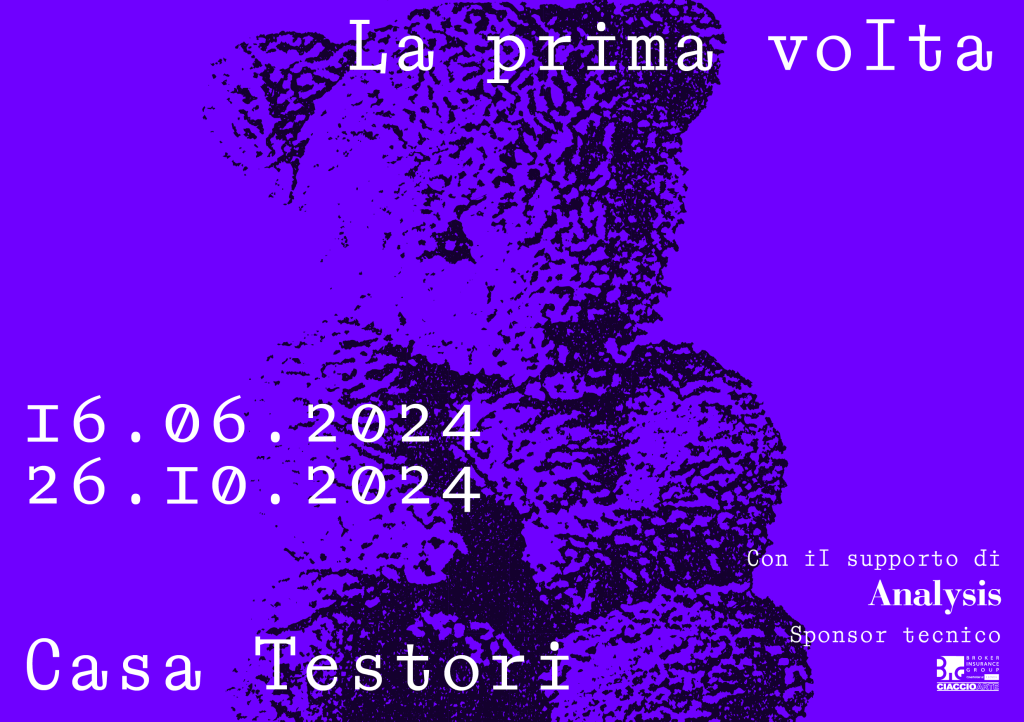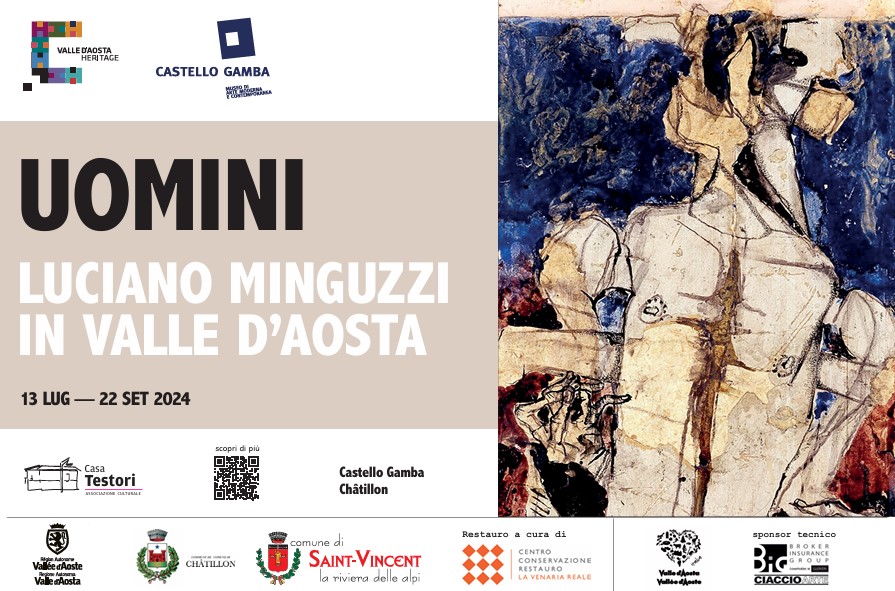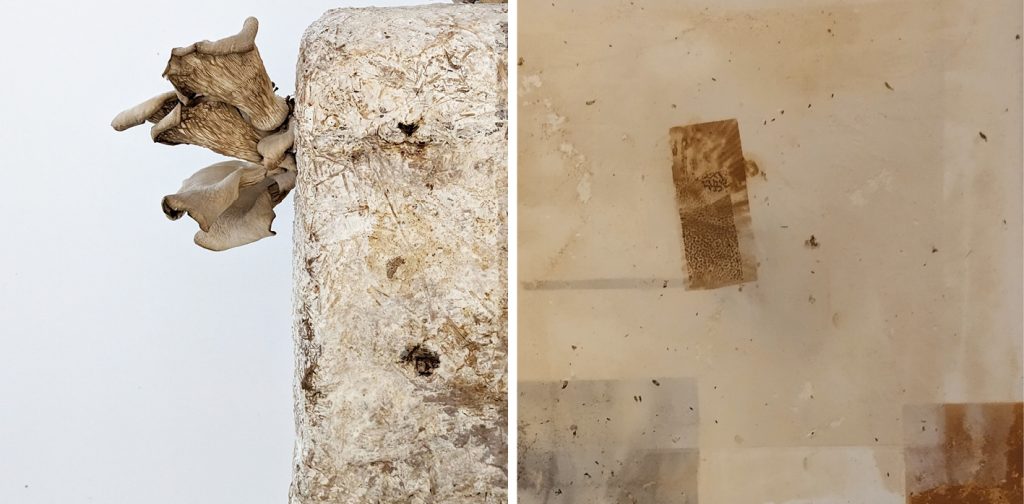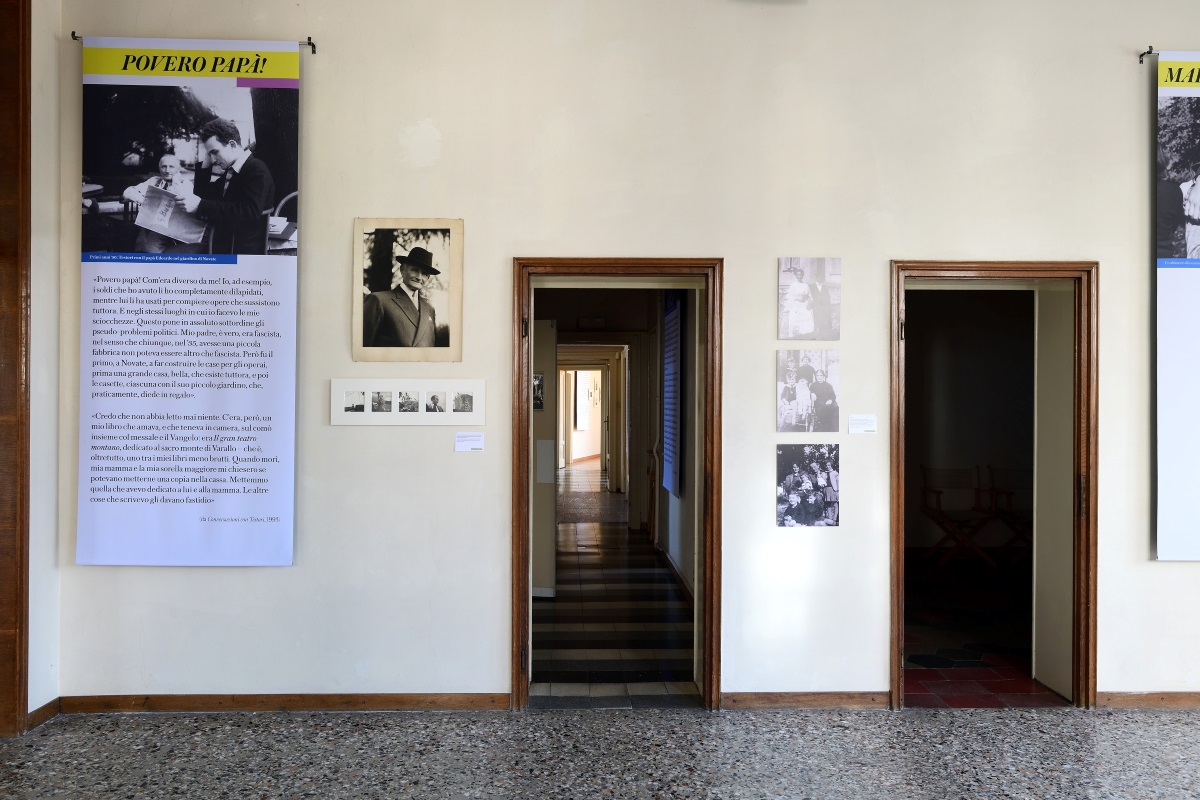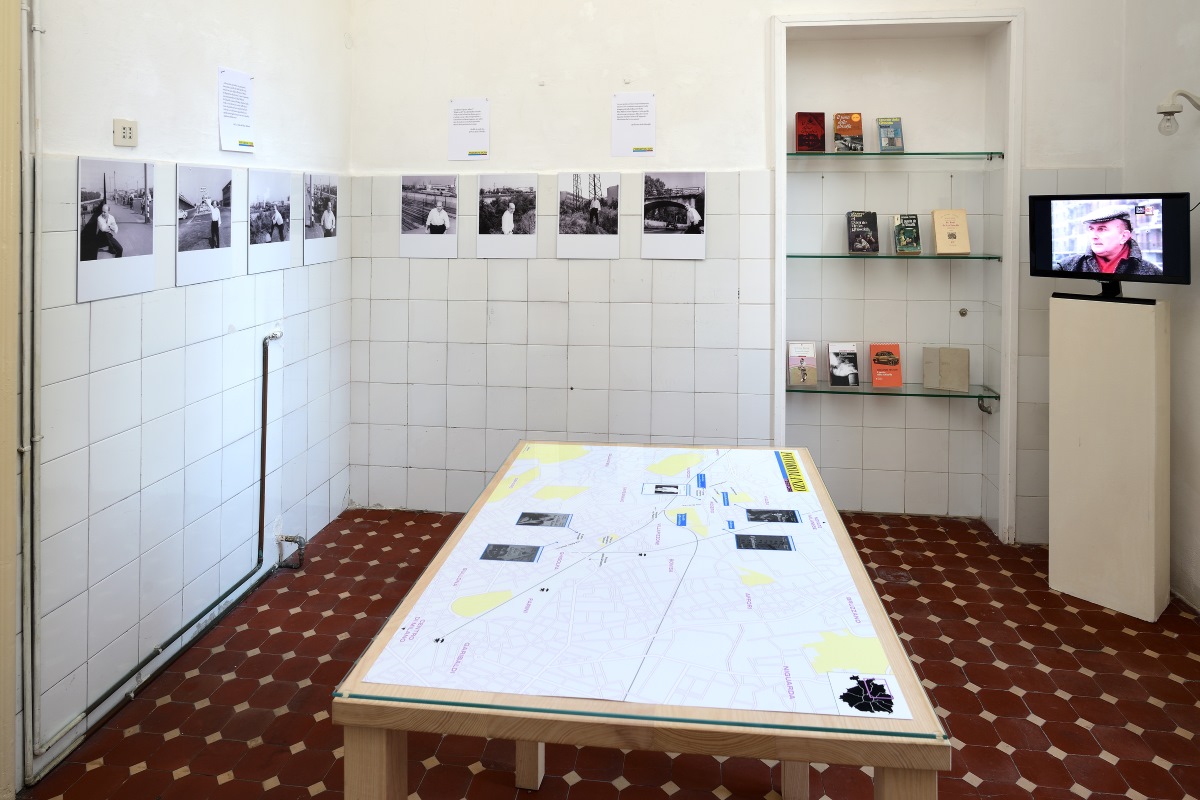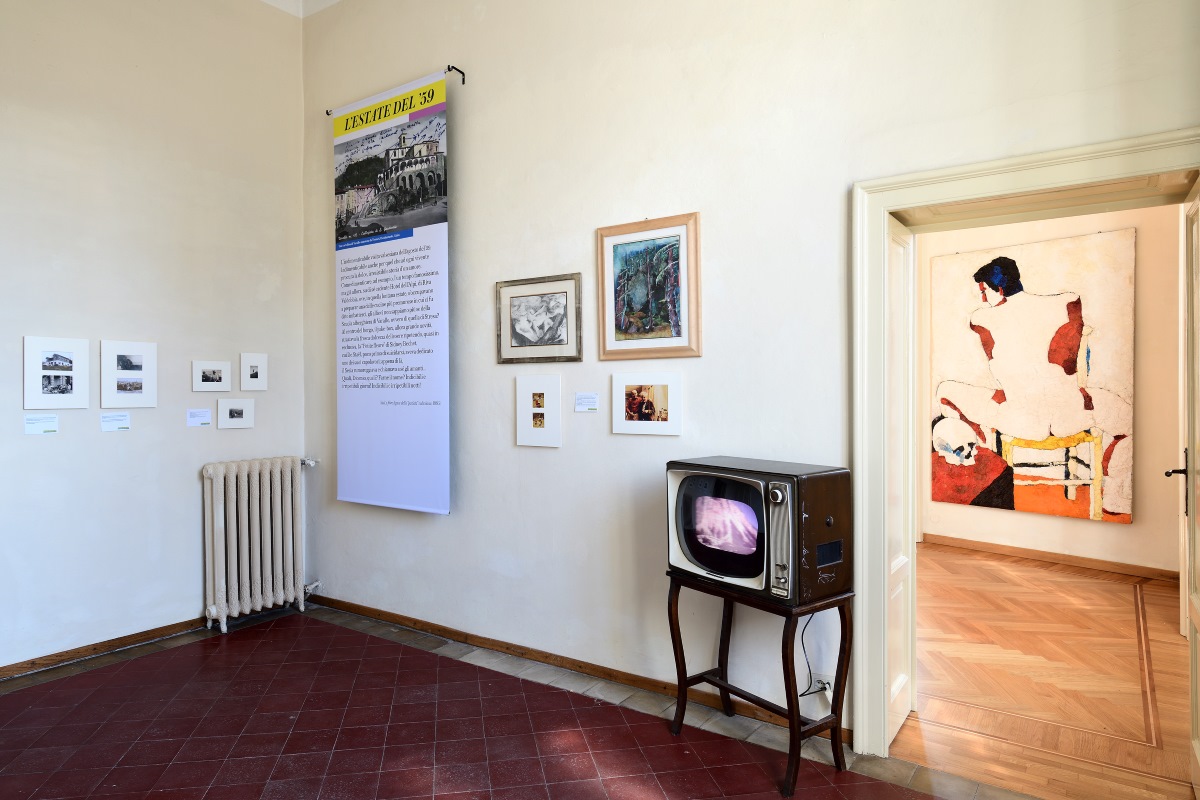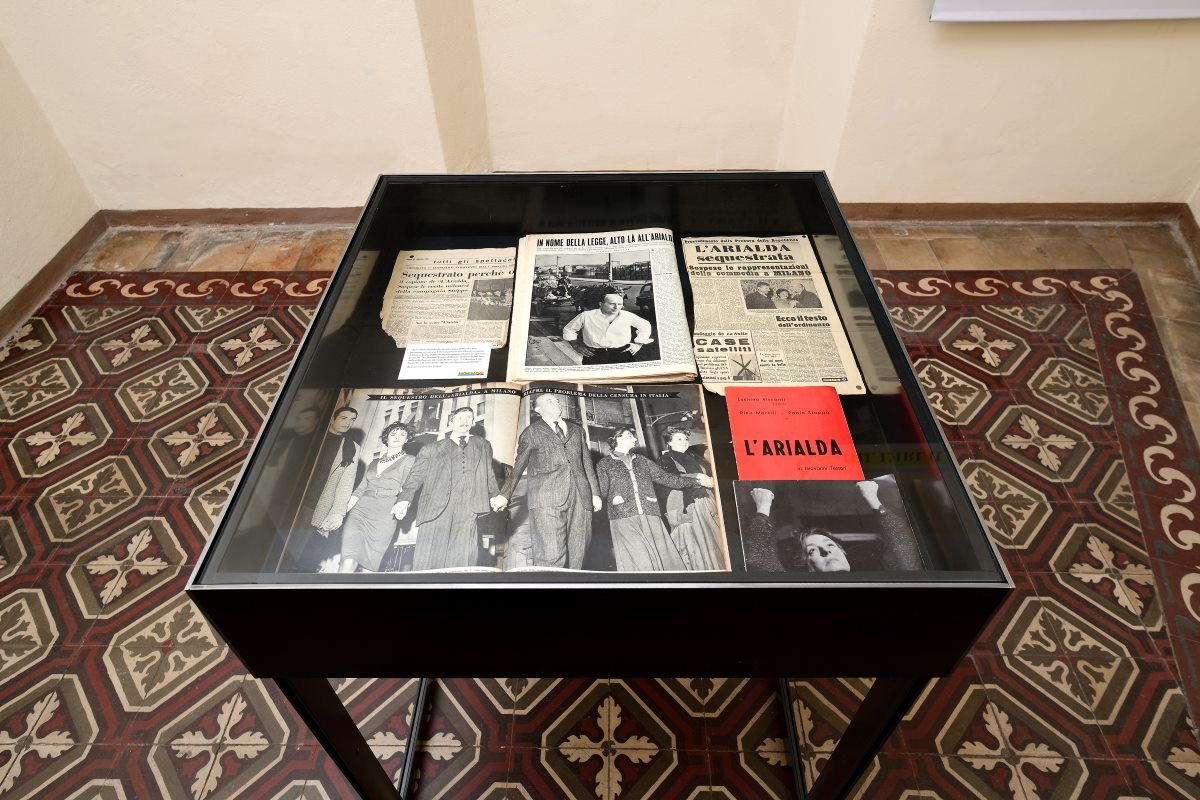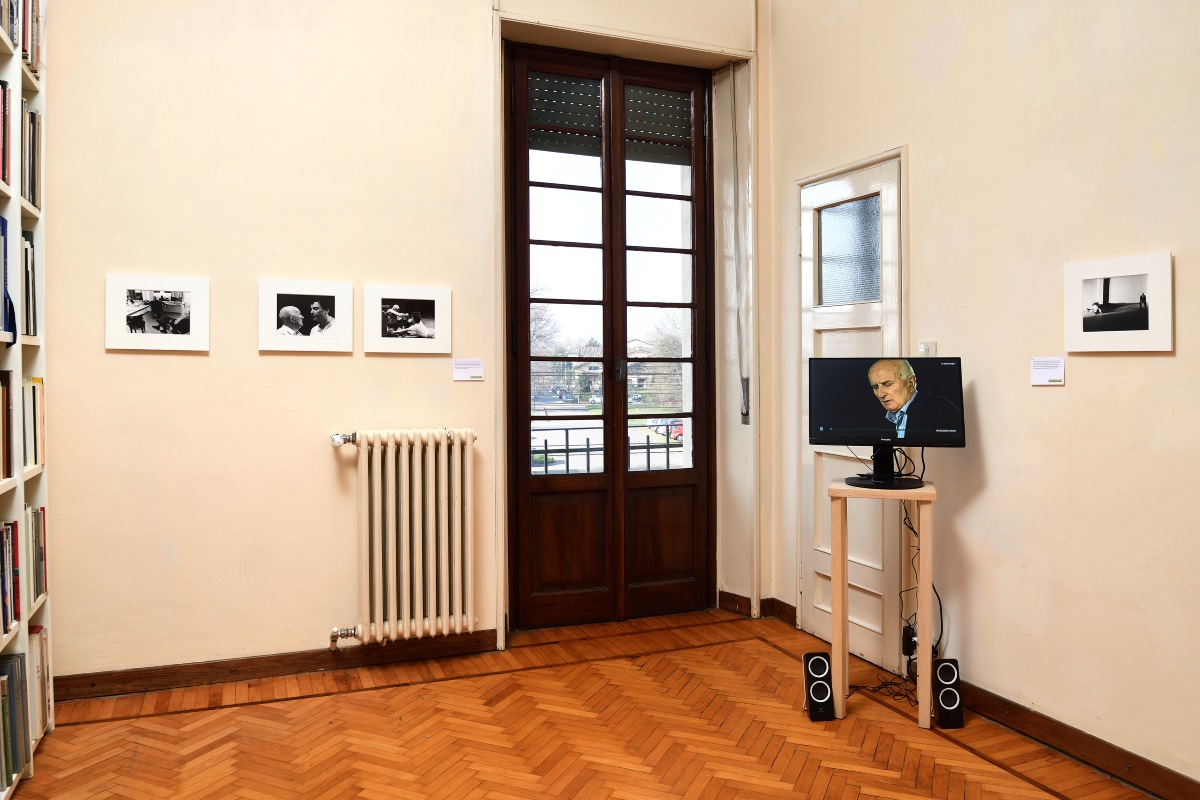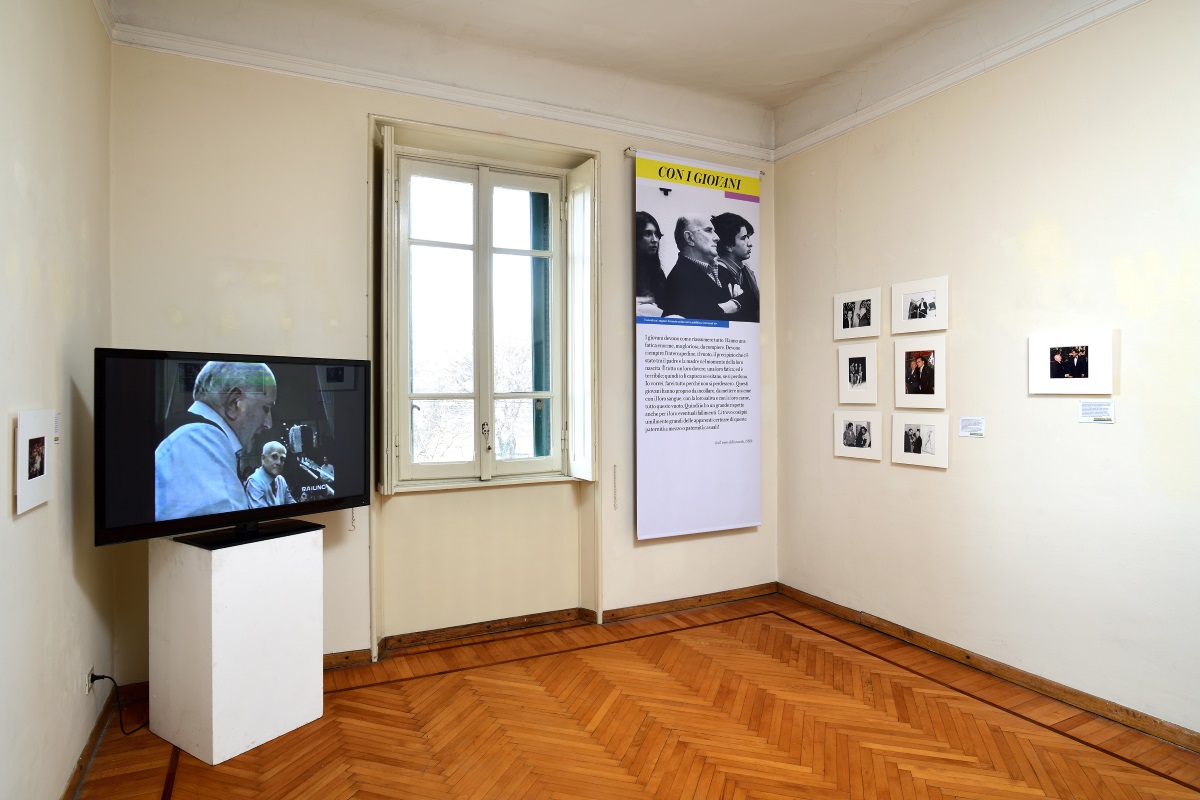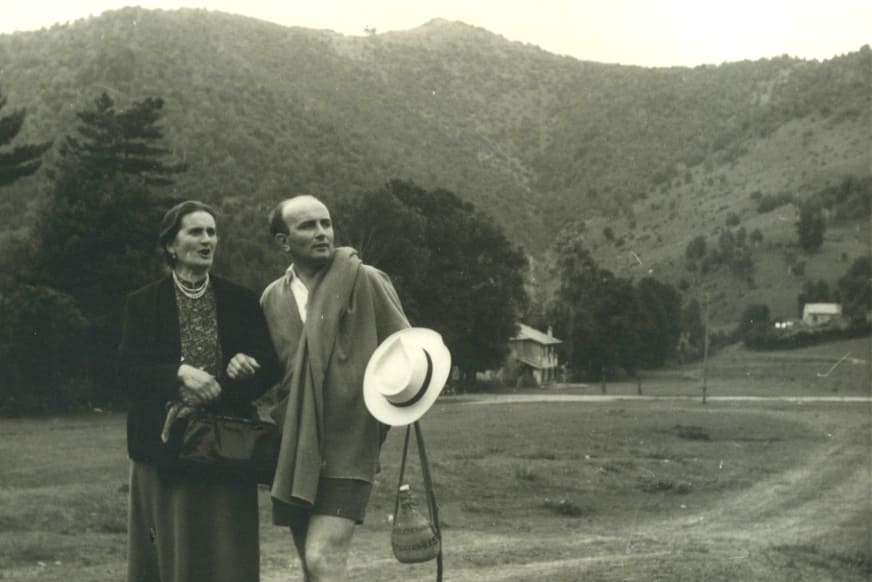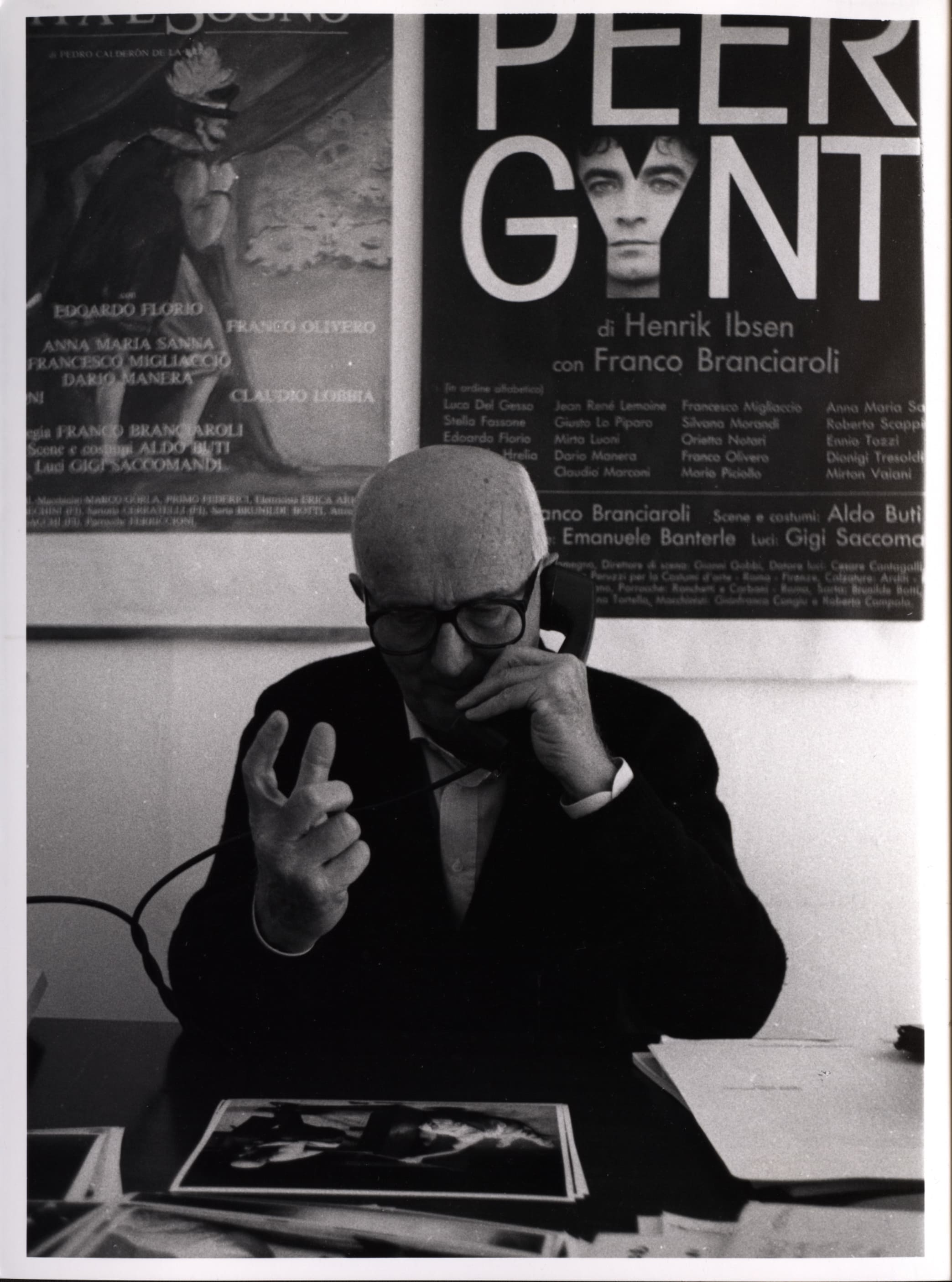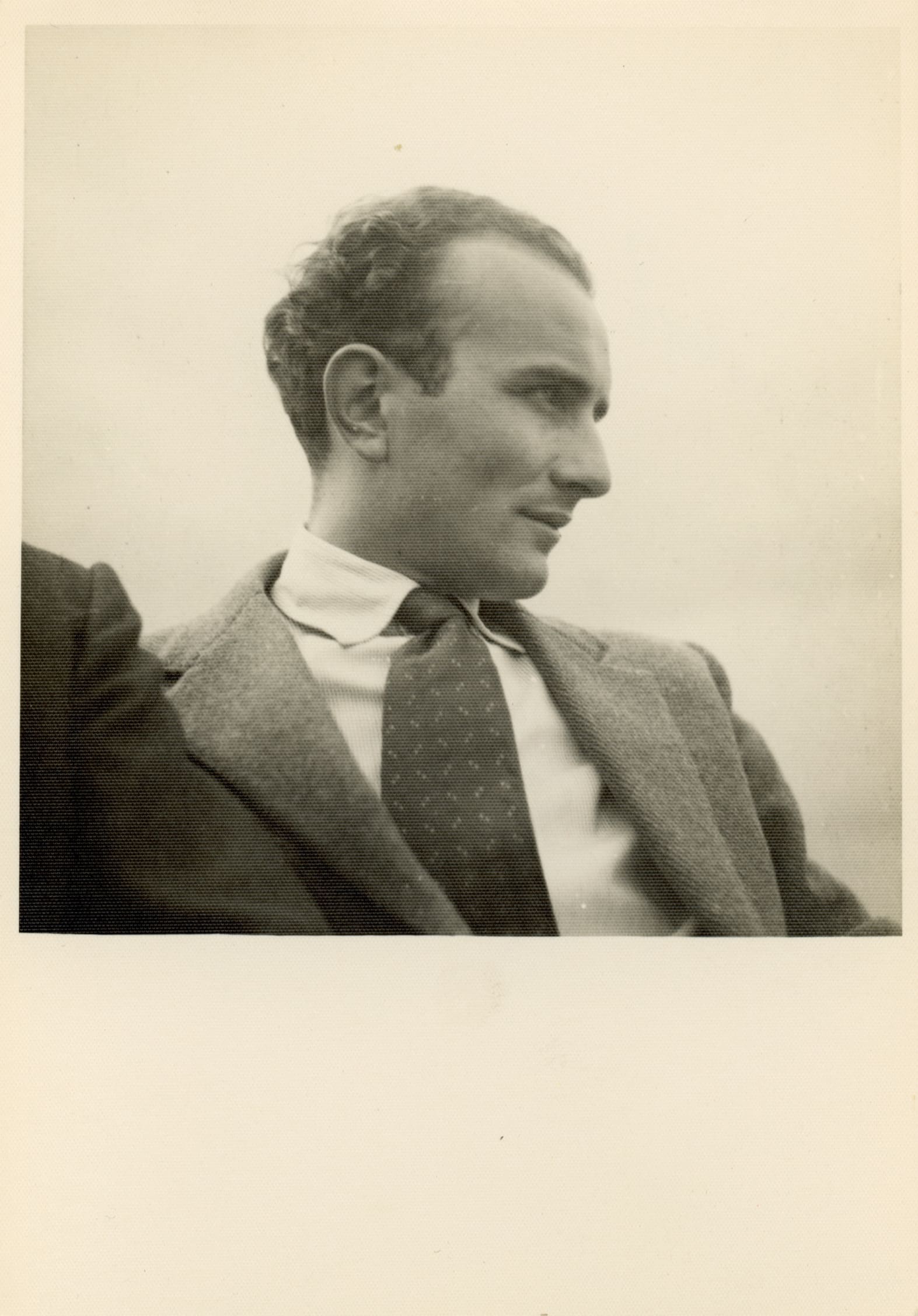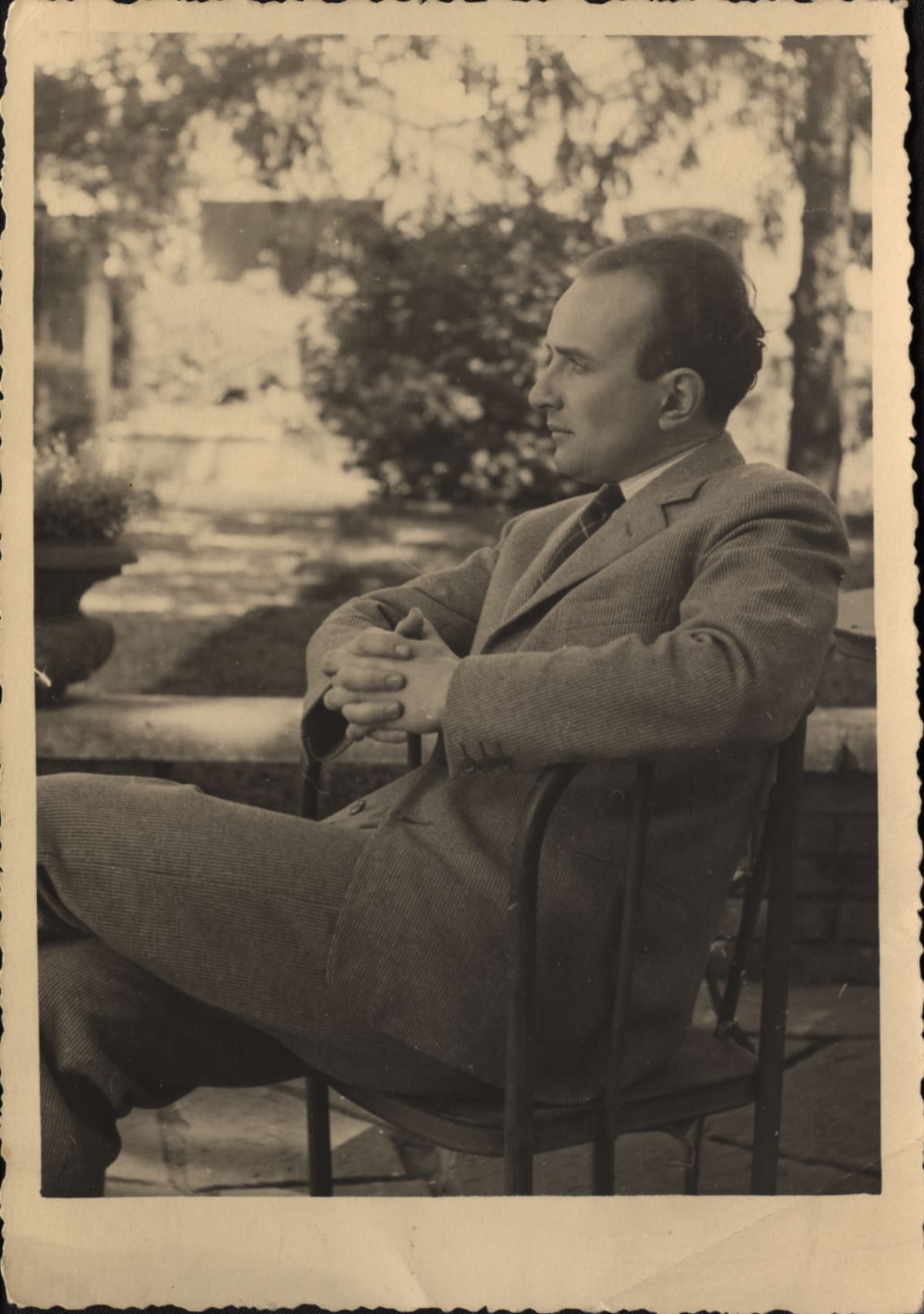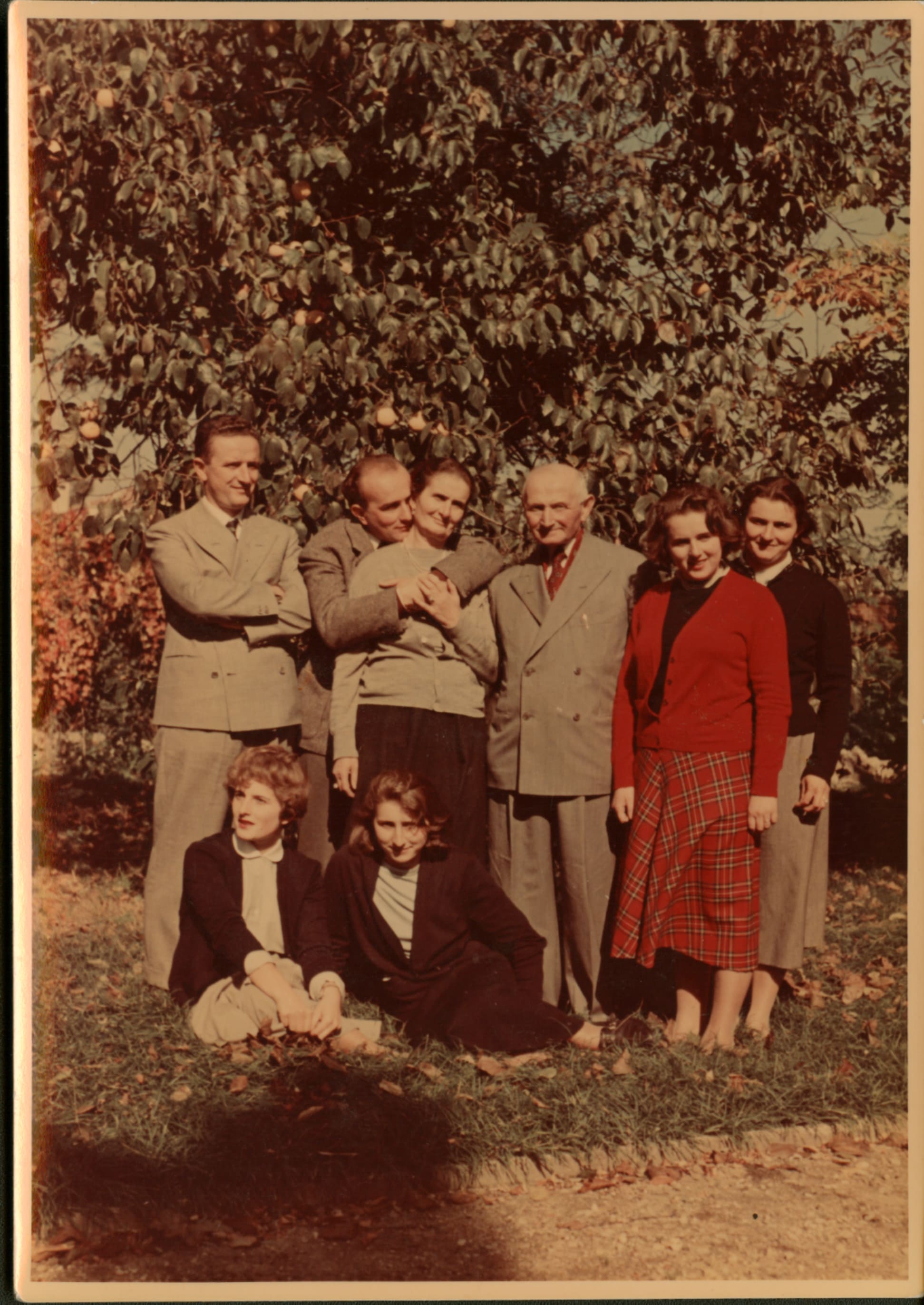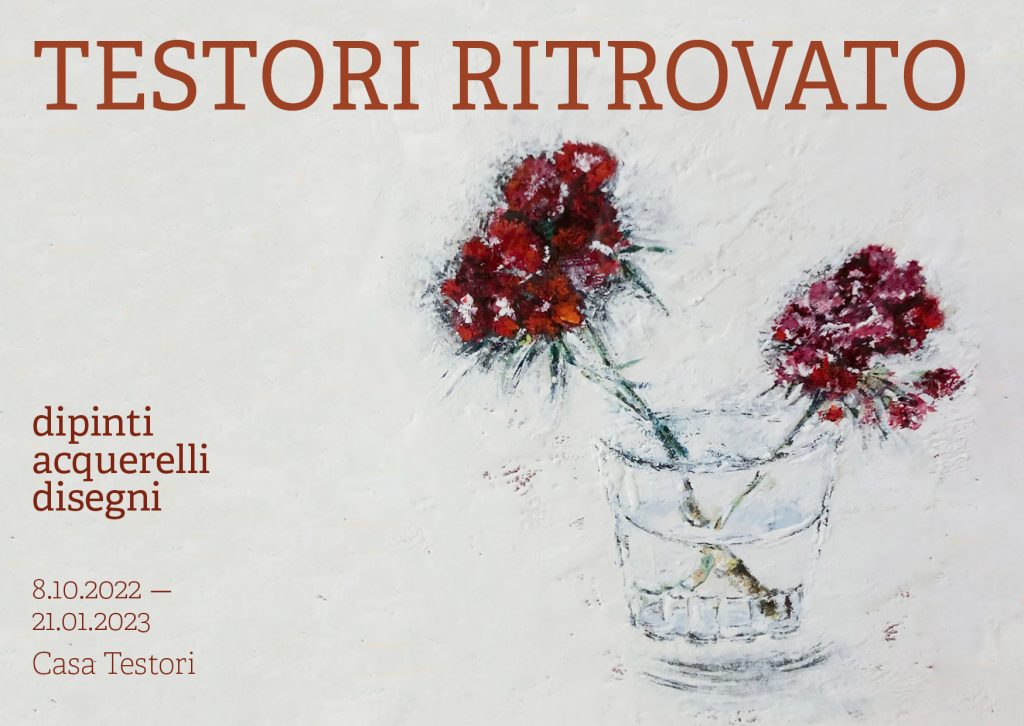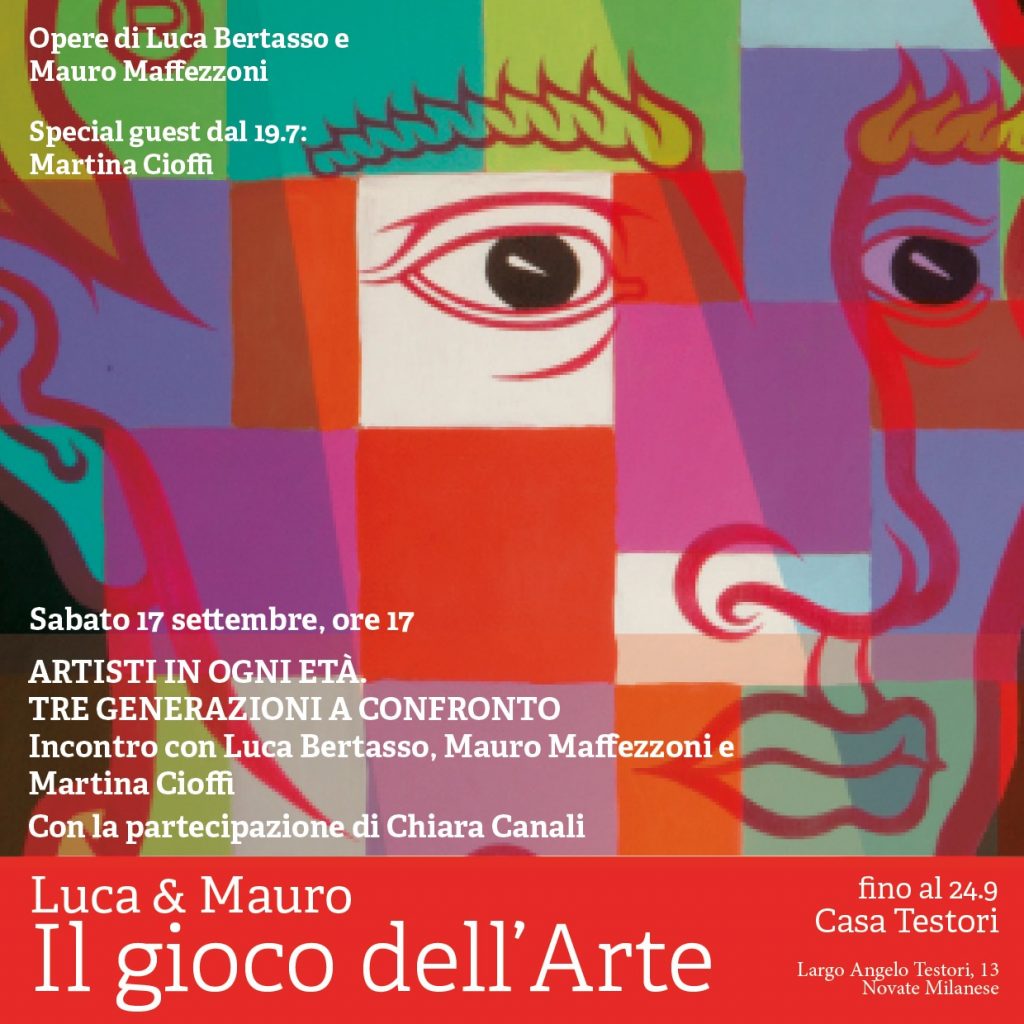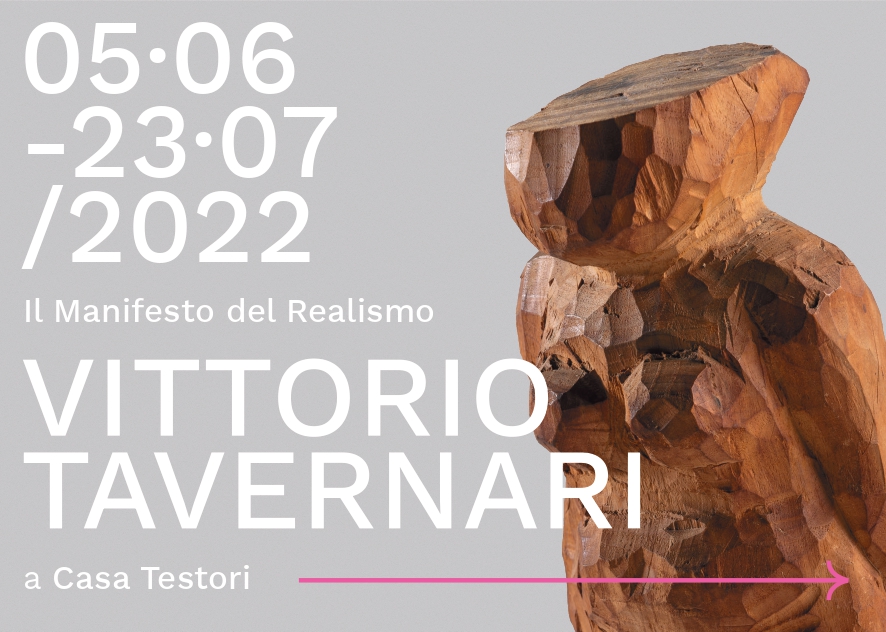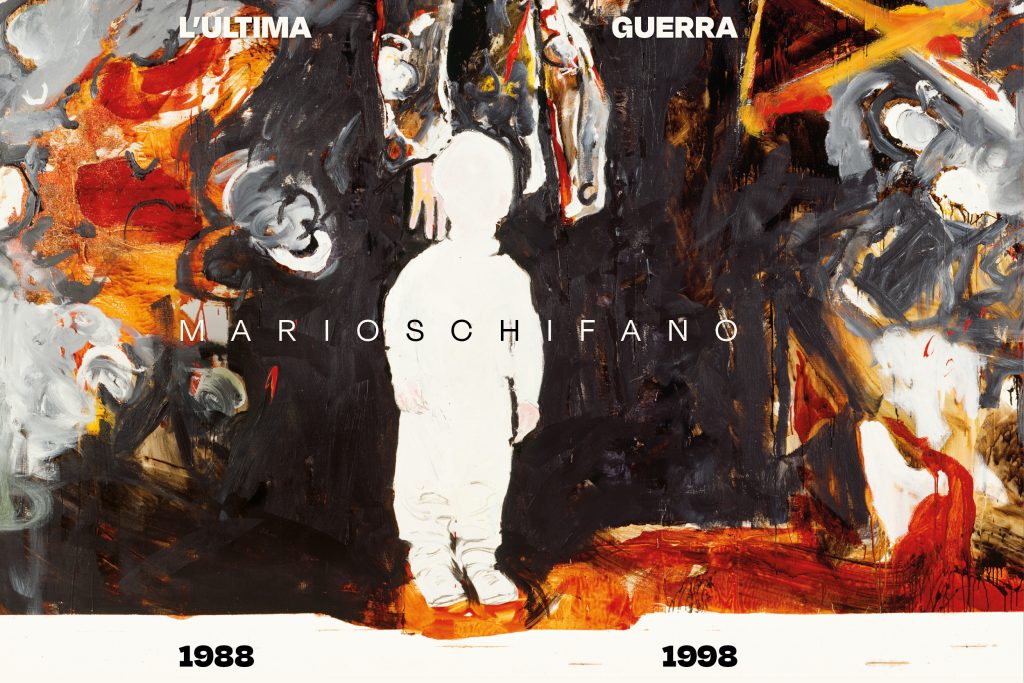…fisso gli occhi dove la luce del sole, già scomparso, scappando pei fessi dei monti opposti, si dipinge qua e là sui massi sporgenti come a larghe e ineguali pezze di porpora… Porpora? Stupendo! Stupendo! E, insieme, presago. Velluto, ecco; velluto…
Giovanni Testori
On Saturday, November 16, 2024, Casa Testori opened Porpora, a collective exhibition that transforms the rooms of Giovanni Testori’s residence into a vibrant stage, filled with artistic and emotional thoughts. The exhibition, curated by Fulvio Chimento in collaboration with Carlotta Minarelli, features five prominent artists: Giulia Cenci, Pierpaolo Campanini, Cuoghi Corsello, Alessandro Ferri, and Valerio Nicolai, whose site-specific works engage in dialogue with the spaces of the historic residence. The exhibition will be open to the public free of charge until March 1, 2025.
Porpora is not only the title of the exhibition but also the symbolic color that runs through it, with all its historical, mythological, and emotional charge. What color has become throughout time the symbol of power, passions, and spiritual elevation? This ancient pigment, linked to power and passion, has fascinated different cultures for centuries, from the Phoenicians who guarded its secret, to the Roman emperors who flaunted it, to contemporary artists like Mark Rothko and Sigmar Polke, who explored its evocative power. Porpora, with its infinite shades—from scarlet red to violet—becomes a metaphor for vitality, sensuality, and human turmoil.
The secret of the pigment was guarded by the Phoenicians, who amassed huge wealth by dyeing the fabrics worn by Roman emperors and nobles. Porpora is a magical and esoteric color with undefined boundaries: red, scarlet, violet, blue, or pink-violet. To provide the mantle for the powerful, the Phoenicians and their successors killed millions of molluscs (two gastropods: Thais haemastoma and Murex brandaris), from whose glands the violet dye was extracted: each gland could produce only a single drop of pigment.
In the Church of San Vitale in Ravenna, the mosaic depicting Emperor Justinian is made of purple tiles, and the same applies to Empress Theodora: her cloak is purple, bordered with gold. John Cage described purple as the most coveted color by the ancients and, at the same time, the most impure; Mark Rothko used it in large backgrounds and in all its derivations to infuse his paintings with sensuality and turmoil; Sigmar Polke was so fascinated by it that he specifically traveled to Naples to buy a large quantity of molluscs to witness the production of porpora himself. The allure of this dye comes from its iridescent nature due to the diffraction of light caused by the cracking of the thin layer of color on the textile fiber. Porpora also recalls blood and vital energy, body-related strength, feelings and impulses.
This seductive nuance, reminiscent of blood and vital energy, is reflected in the works of the artists involved, who, with different approaches, contribute to creating a profound reflection on the body, emotions, and nature. Casa Testori, through the works of Giulia Cenci, Pierpaolo Campanini, Cuoghi Corsello, Alessandro Ferri, and Valerio Nicolai, is imagined as a single body, an extended thoracic cavity, capable of bringing together the sensitive and “emotional” spheres, thought, and artistically directed action. The intent is to evoke feeling in relation to art, but, above all, in relation to life itself; an exhibition of borderline states of mind that seeks to approach the reality of passions. In this way, a site-specific art project is created in the place where Giovanni Testori lived, a man who fought to defend a very personal idea of life and art, free from cultural and political constraints.
From the outside, the structure of Casa Testori may appear like a small provincial railway station; more than two hundred trains pass in front of the building every day, connecting Milan to Brianza. The passage of trains on the nearby railway causes repercussions and tremors on the residence’s components: the windows, the wooden doors and the floor; as well as a continuous resonance between inside and outside. It was precisely from these imperceptible tremors that the idea for the exhibition was born, the inspiration to imagine Casa Testori as a large ribcage, a place where slight inner vibrations and breaths create a subtle communication between the organs. Beyond this is the idea of a nature that inhabits the body in a totalizing and pervasive way, and which, therefore, does not need to be sought out by humans, but can be listened to inwardly, in recollection and continuously.
The works exhibited at Casa Testori can be seen as a (slow) overflowing of the organism towards the outside, in a movement that reveals its moist areas, of growth and regeneration, and those of death, where dryness and transience lurk. Porpora is thus a revelation of a purely inner nature that in a sensual and spontaneous way manages to find an open path to the exterior.
The exhibition has been extended and could thus be visited until Saturday, March 8, 2025. On the occasion of the finissage, a guided tour was held with the curator, Fulvio Chimento, and some of the artists.
INFORMATION
TITLE: PORPORA. IN CONTINUA RISONANZA
CURATED BY: Fulvio Chimento in collaboration with Carlotta Minarelli
ARTISTS: Giulia Cenci, Pierpaolo Campanini, Cuoghi Corsello, Alessandro Ferri, Valerio Nicolai
LOCATION: Casa Testori, Largo Angelo Testori, 13, Novate Milanese (MI)
DATES: November 16, 2024 – March 1, 2025
ORGANIZED BY: Casa Testori
IN COLLABORATION WITH: Associazione Controcorrente, Bologna
OPENING HOURS: Tuesday – Friday: 10:00 AM – 1:00 PM; 2:30 – 6:00 PM | Saturday: 2:30 – 7:30 PM Sunday and Monday: Closed
ADMISSION: Free
PRESS OFFICE CASA TESTORI:
Maria Grazia Vernuccio – Tel. +39 3351282864 – mariagrazia.vernuccio@mgvcommunication.it
